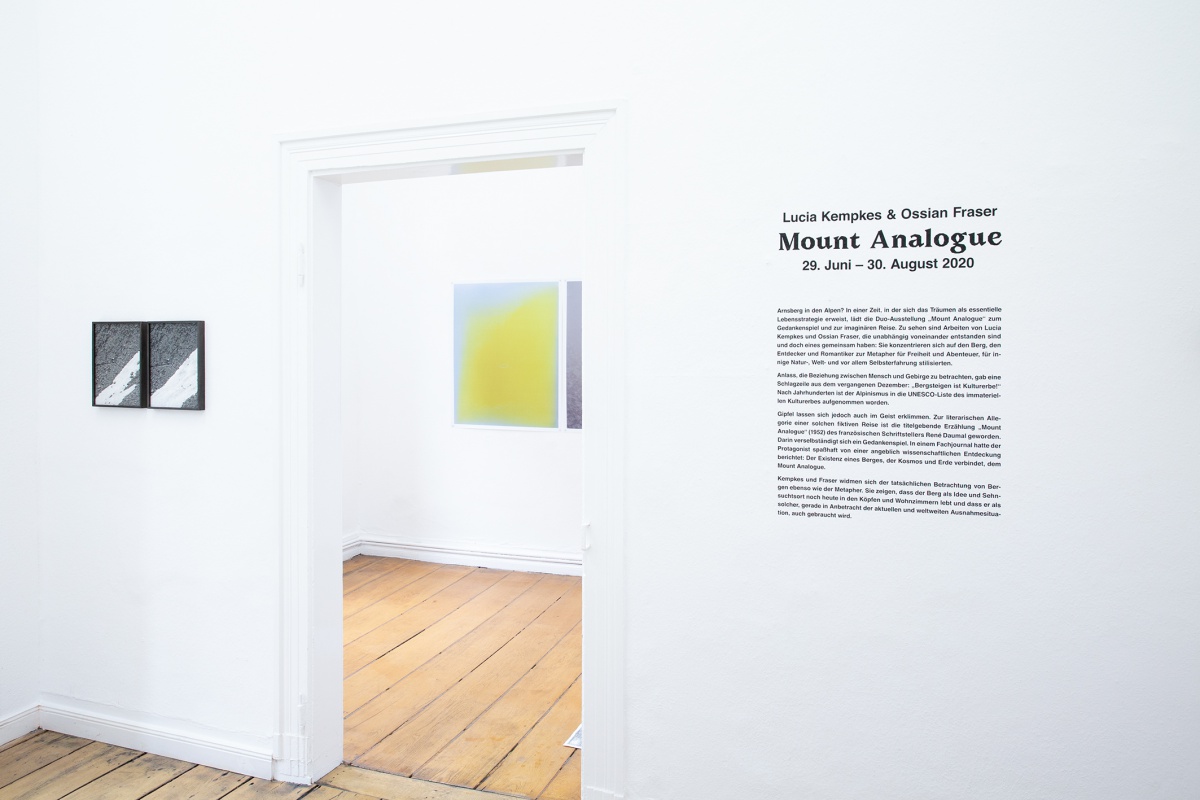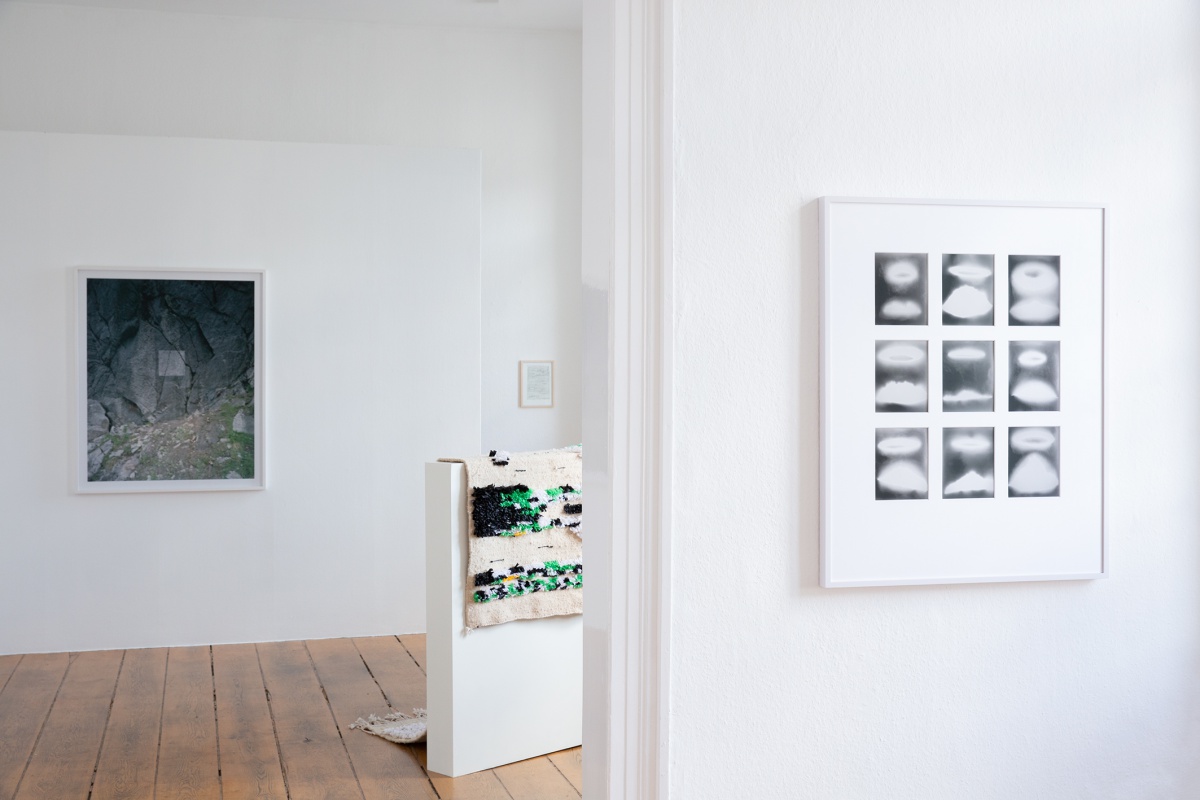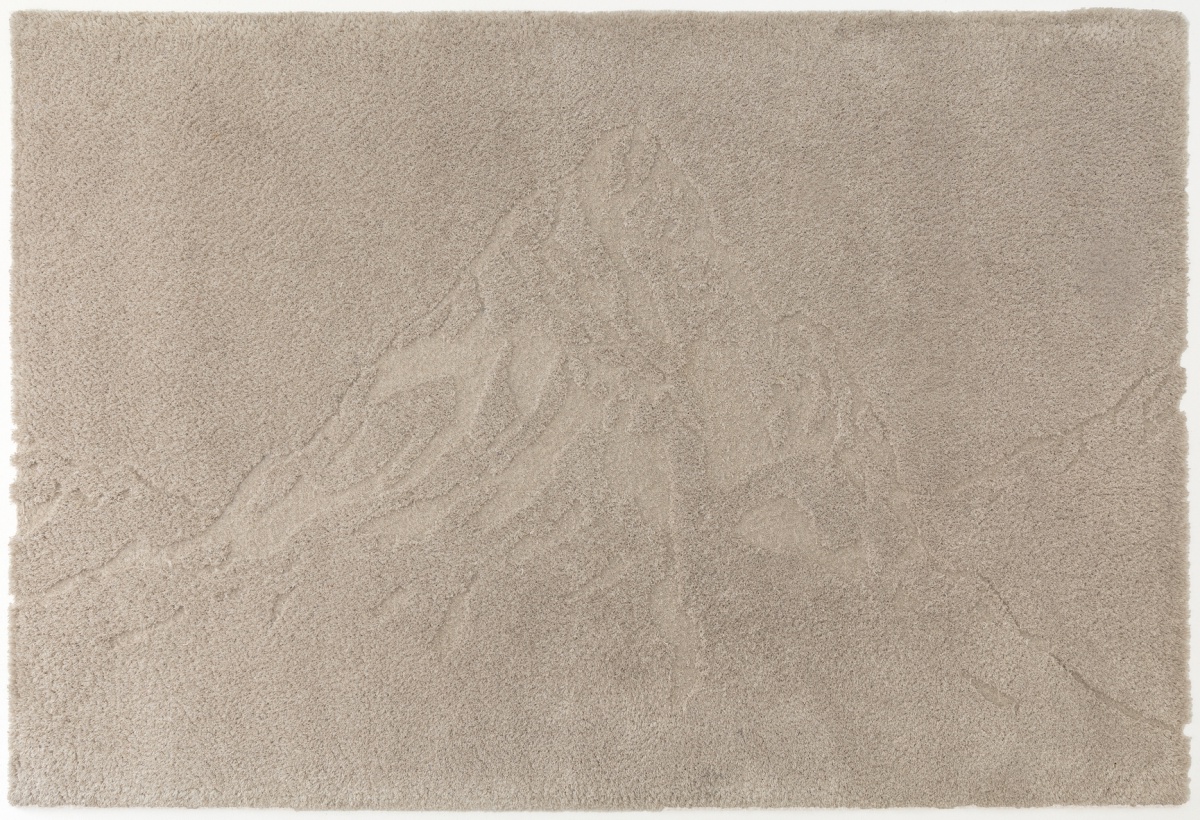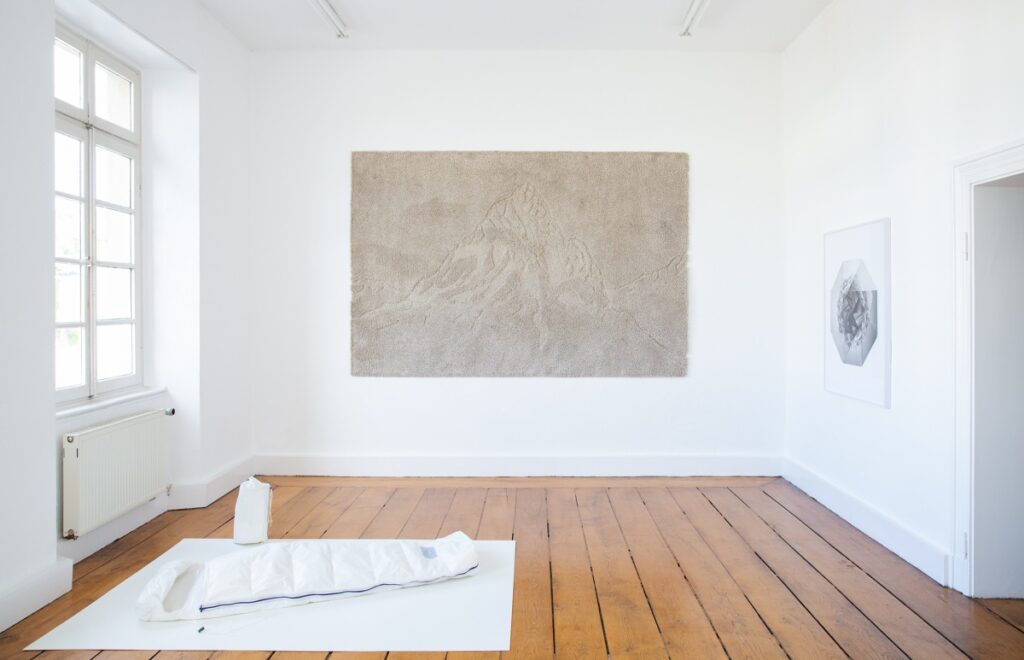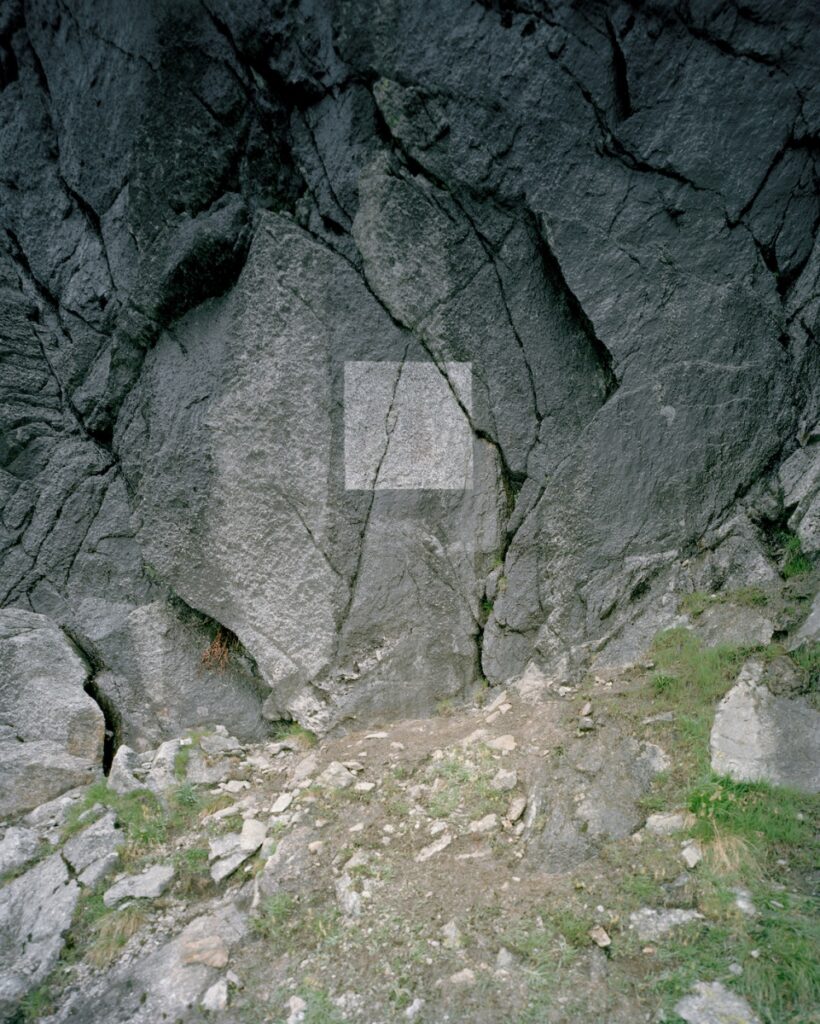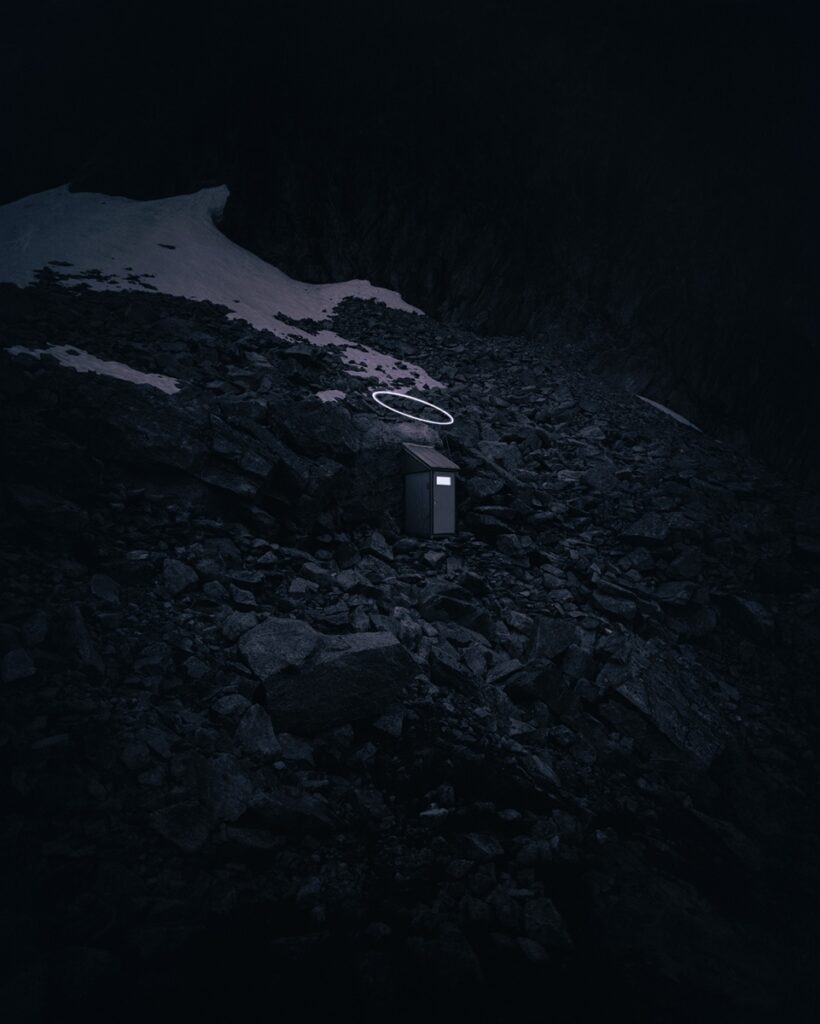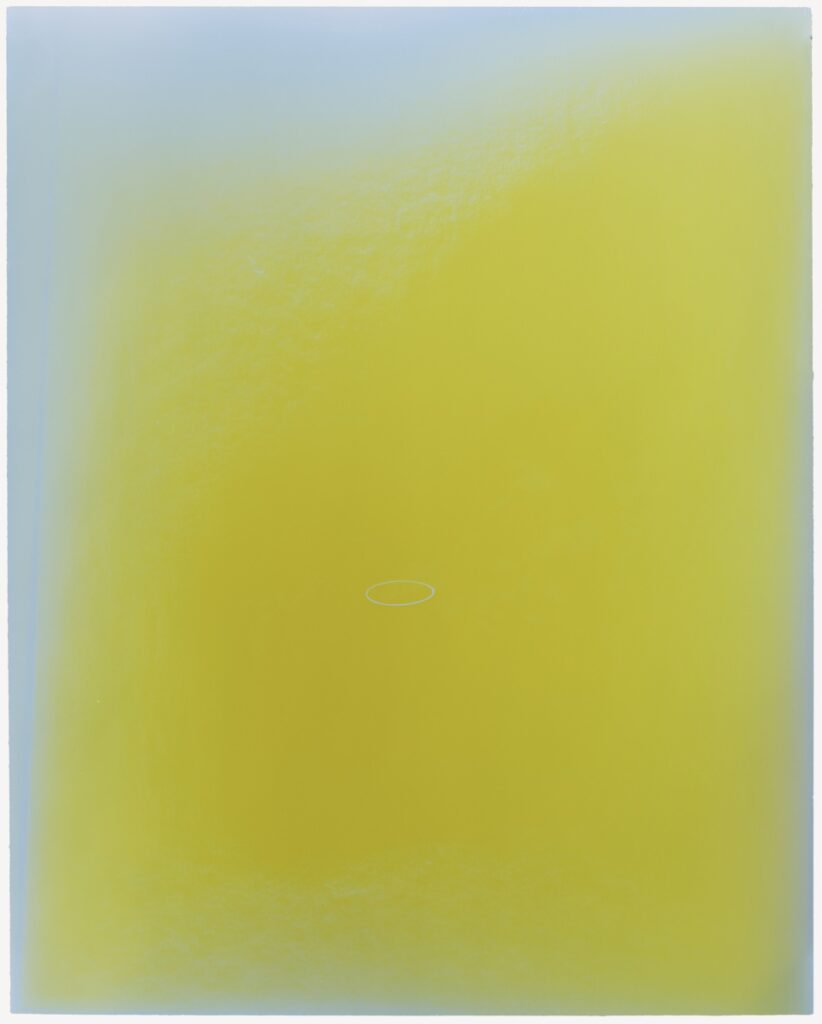Lucia Kempkes & Ossian Fraser
Mount Analogue
29. Juni – 6. September 2020

Arnsberg in the Alps? In a time in which dreaming proves itself to be an essential survival strategy, the duo exhibition Mount Analogue invites to an imaginary journey. The works shown by Lucia Kempkes and Ossian Fraser were developed independently of one another, but share a common theme: they focus on the mountain which has been shaped by explorers and romantics to a metaphor for freedom and adventure, for a profound encounter with nature, the world, and perhaps foremost with the self.
The stimulus for this closer analysis of the relationship between humans and mountains was given by a headline from last December: ‘Mountain Climbing is Cultural Heritage!’ After centuries, alpinism has been added to the UNESCO list of Intangible Cultural Heritages. Therewith, a long tradition has been acknowledged and honored. It was the great explorers who initially dispelled the gods from the mountains. In the name of science, academics took their place. In consonance with groundbreaking insights into the history of the earth, humankind overcame its vertigo. Consequently, and since the end of the 18th century, it is not only scientists, artists and poets who are drawn to the mountains.
Peaks, however, can also be conquered in mind. A literary allegory of such a fictional journey is provided by the story that also serves as exhibition title: Mount Analogue (1952) by the French author René Daumal. Here, a thought experiment takes on a life of its own: as a joke, the protagonist reports in an academic journal the supposed existence of a mountain which unites cosmos and earth, the Mount Analogue. Without revealing the nature of his thesis, he sets off with fervent supporters to begin the search for the mountain. Even though they find it, the story ends after the initial stages of the climb into the unknown. The manuscript abruptly breaks off in the middle of a sentence. The author was never to finish it. Daumal shows on the narrative level how reality and fiction blur into one another. His Mount Analogue becomes an analogy, a parable of the power of visions and yearnings. It is a subject also to be found in the works of Lucia Kempkes und Ossian Fraser.
Lucia Kempkes has for several years been concerned with the emotional relationship between humankind and nature. The artist from North Rhine-Westphalia concentrates in particular on the mountain landscape. In her series I Wish I Could Climb she weaves together the opposite spheres defining the life of a mountain climber: the familiar home and the lonely peak. Into a carpet embodying domestic comfort, a stereotypical image of a mountain is cut. The mountain climber’s gaze, which – as Kempkes notes with amusement – is more often fixed on the ground than on the panorama gets mixed with patches of soft wool. The contrast is strengthened in the work cycle To Protect Us From What We Seek, in which the constant development of high-tech materials and tools to overcome human limits is thematised. Here we find a sleeping bag and sleeping mat made of paper – empty shells which become the unlabeled packaging of yearning. Mountain panoramas, used on social media and in advertising to proclaim the ultimate nature experience, are freed from traces of humans, tents and backpackers with crude gestures and the Photoshop eraser. Only the purified nature – including the empty spaces – make it into Kempkes’ drawings. Her current project connects the Atlas Mountains with the Alps: She cut Swiss paragliders into strips which were in the following process woven into Berber carpets after her designs. That the artist’s works are throughout influenced by digital visual culture is noticeable in her collage for the invitation: It shows the central marketplace in Arnsberg at the foot of the Alps (Arnsberg is located in the Ruhr area). Watermarks reveal the generic character of the mountain panorama. Perhaps it is because this perspective has already become embedded in the collective visual memory that this sight seems so remarkably coherent.
While Kempkes is fully dedicated to the mountain as metaphor, the works of Ossian Fraser have for the most part actually been produced in the mountains. In the context of a residency in July 2019 he spent two weeks on the 1927-built Cabane de l’A Neuve in the Swiss Alps. The climb to the hut at an altitude of 2,735 m was achieved on foot. For the development of new works, he had only the equipment in his backpack and the nature around him. This limitation fits rather well with Fraser’s artistic practice: he often creates subtle works in inconspicuous places in urban or natural environments. With his camera and artistic interventions, he creates a dialogue between architecture, sculpture and photography, massively potentiating the spatial presence of incidental situations. In this sense, paths on the mountainside appear as land art drawings, a square landing pad for helicopters becomes a pedestal for a cube of snow, a cliff face the base for a picture, the Cabane de l’A Neuve and the outdoor toilet are crowned with a corona. Geometric figures – circle and square – contrast with the diversity of forms in nature. In the end Fraser’s photographs also reflect on what draws people to the mountains: the profound experience of nature. Whether a thunderstorm over the mountaintops, the curved atmosphere of the earth traced in the paths of the stars, or the fog in which even over 4000 m high peaks disappear. It is experiences of the sublime which firmly influence Fraser’s work. He too is starting to investigate the symbolic character and stereotypical presentation of mountains. One of these, probably the most well-known pictogram on earth, serves as a template for his installation in the Kunstverein garden: the mountain emoji.
Kempkes and Fraser show that the mountain as metaphor, just like the Romantics shaped it, persists in our heads and living rooms, whilst the current and worldwide state of exception demonstrates how much we are still in need of such visions.
Lydia Korndörfer
